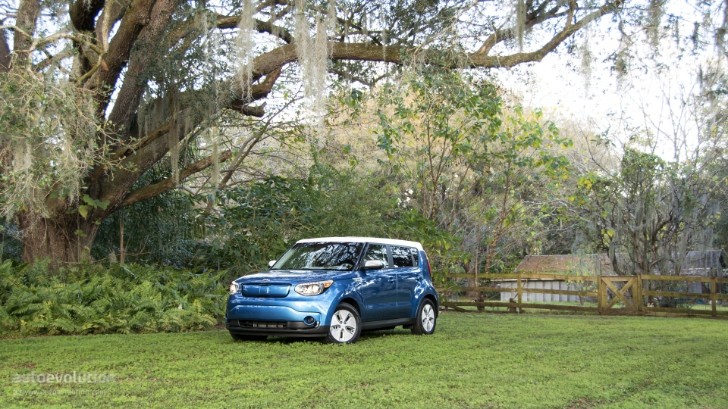When Kia unveiled the 2015 Soul EV, the rest of the electric car crowd got a chill down their spine. That’s simply because the offering at the moment isn’t all that diverse and also because this was supposed to be a cheap offering. Now that we’ve got our hands on it, we’re not so sure.
The rivals of the Kia Soul EV include the Chevrolet Spark EV, Nissan Leaf, Volkswagen e-Golf, Fiat 500e, Ford Focus Electric and 2014 Honda Fit EV, all of them being outclassed by the EPA estimates regarding the range of the South Korean: 93 miles (150 km).
That’s an impressive number when you think about it, close to what more expensive and claimed ‘premium’ offerings offer. Yes, I’m referring to the i3.
Recharging the battery depends on your power source. If you’re using a standard 110-volt cord you’re going to need around 24 hours while 4-5 hours should be enough on a 240-volt socket, which most EV buyers will probably have at their house.
The Kia Soul EV also has a standard 480-volt DC Fast Charge port that allows for an 80-percent charge in just 33 minutes. On top of that, some charging points let you replenish your energy for free.
Speaking of recharging and range, the best thing about this car is that we noticed that even if you drive it a bit more aggressively, the range won’t drop as fast as on conventional, petrol-powered cars. That’s not meant to say that this is a car you car drive in a sporty manner.
On paper, the electric Soul is not all that impressive with a 21-hp drop and 500-pound weight gain compared to a base 2015 Soul not to mention a 0-60 time of 11.2 seconds and a top speed limited to 90 mph (145 kph). Driving it around town is where you’ll have most fun, with the acceleration to 30 mph being rather brisk.
Bottom line, the 2015 Kia Soul EV is a good city car, doing everything it has to, emissions free and in a timely manner. There are two problems surrounding it, though: the infrastructure and the pricing.
Basically, you can’t really enjoy this car if your city doesn’t offer you charging stations or if you don’t have a garage where you can ‘fill it up’. Even then, you’ll need an adapter to get the voltage up to 240V.
On top of that, Kia wants nearly double the money for an EV and the $18,510 difference compared to a stock, petrol-powered model will take ages to recover by not paying for gas.
Is the hassle worth it? If it means saving the planet, yes, but the truth of the matter is, the EV movement is all too small at the moment. Maybe it will be more significant in the future when cars like the 2015 Kia Soul EV we reviewed make more sense.
That’s an impressive number when you think about it, close to what more expensive and claimed ‘premium’ offerings offer. Yes, I’m referring to the i3.
Recharging the battery depends on your power source. If you’re using a standard 110-volt cord you’re going to need around 24 hours while 4-5 hours should be enough on a 240-volt socket, which most EV buyers will probably have at their house.
The Kia Soul EV also has a standard 480-volt DC Fast Charge port that allows for an 80-percent charge in just 33 minutes. On top of that, some charging points let you replenish your energy for free.
Speaking of recharging and range, the best thing about this car is that we noticed that even if you drive it a bit more aggressively, the range won’t drop as fast as on conventional, petrol-powered cars. That’s not meant to say that this is a car you car drive in a sporty manner.
On paper, the electric Soul is not all that impressive with a 21-hp drop and 500-pound weight gain compared to a base 2015 Soul not to mention a 0-60 time of 11.2 seconds and a top speed limited to 90 mph (145 kph). Driving it around town is where you’ll have most fun, with the acceleration to 30 mph being rather brisk.
Bottom line, the 2015 Kia Soul EV is a good city car, doing everything it has to, emissions free and in a timely manner. There are two problems surrounding it, though: the infrastructure and the pricing.
Basically, you can’t really enjoy this car if your city doesn’t offer you charging stations or if you don’t have a garage where you can ‘fill it up’. Even then, you’ll need an adapter to get the voltage up to 240V.
On top of that, Kia wants nearly double the money for an EV and the $18,510 difference compared to a stock, petrol-powered model will take ages to recover by not paying for gas.
Is the hassle worth it? If it means saving the planet, yes, but the truth of the matter is, the EV movement is all too small at the moment. Maybe it will be more significant in the future when cars like the 2015 Kia Soul EV we reviewed make more sense.
